This was published 1 year ago
Byron Bay beyond the glam: A local's guide to Australia's most famous beach town
By Shaney Hudson
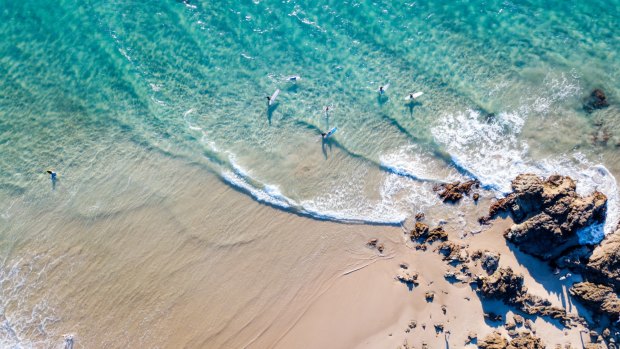
Before COVID-19 hit two years ago, Byron Shire attracted an estimated 2.5 million visitors every year.Credit: iStock
When I was 10, believe it or not, I used to complain from the backseat of the family's canary yellow station wagon, about spending every holiday in Byron Bay at my grandparents' former white fibro home on Carlyle Street.
Many years later, in fact only the other week, I drove past the house — where my grandfather had snapdragons, violets and runner beans on the quarter-acre block, while inside my grandmother made banana cream pie and sewed wedding dresses for local brides — to discover it had become an Airbnb.
It's now listed for close to an eye-watering $1000 night.
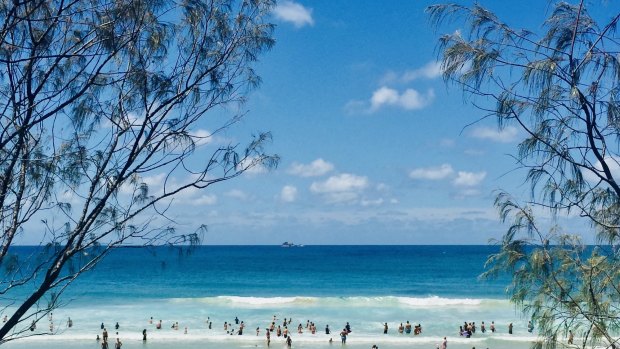
After the devastating floods in the Northern Rivers, tourism is set to form an essential part of the region's recovery.Credit: iStock
Today, tourism is a can't-live-with-it-can't-live-without-it proposition for Byron and its region: somewhat detrimental to the quality of life of those who live there, yet critical to the economy. Now, after the devastating floods in the Northern Rivers, it's set to form an essential part of the region's recovery.
Before COVID-19 hit two years ago, Byron Shire attracted an estimated 2.5 million visitors every year. If you've never visited, it's hard to understand the appeal of the overexposed coastal town; just what is it that makes Byron Bay so popular?
Some will tell you it's the lifestyle, surf spots and hippy vibe, others will point to the vibrant creative and entrepreneurial scene. Those who call it home, however, believe what makes Byron so special are the locals themselves.
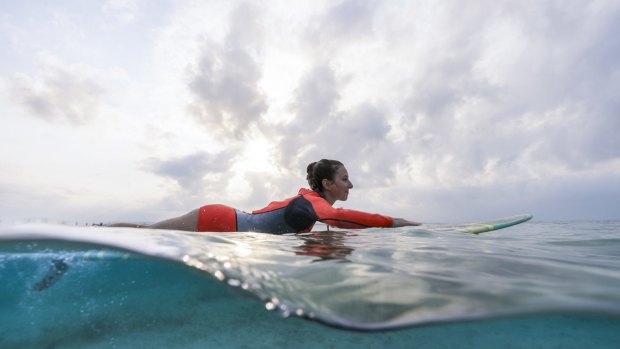
My best childhood memories are of days spent at The Pass, but there's more to the site than meets the eye.Credit: Destination NSW
"Byron's always been a tourism town ever since I was a little girl, and this town's always been welcoming to people," says Arakwal-Bundjalung elder Delta Kay, who began running Indigenous tours in the Byron Shire in late 2020. "It's a place that people are drawn to; not only the beauty that you see with your eyes, but the beauty of the people."
For thousands of years, Byron Bay has been a gathering place for the Arakwal-Bundjalung tribes that live across the region. They called it Cavanbah – meeting place – and it was considered a place of abundance thanks to the plentiful environment.
Yet, this abundance has been plundered for more than a century. From clearing old-growth rainforest to whaling in the waters of the bay and sand mining for zirconium, the Byron region has been exploited for its natural resources.
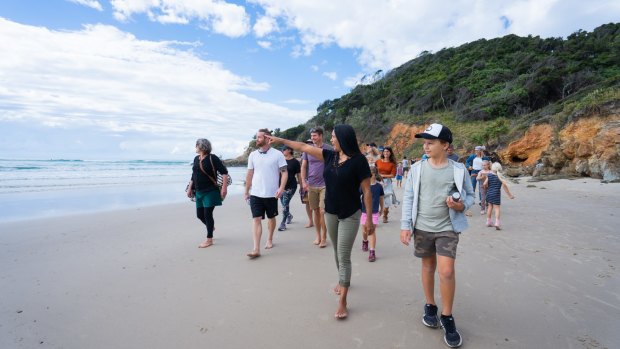
Delta Kay's Indigenous Tours takes visitors for a walk on Country, with creation stories, and an introduction to the foods, practices, and history of the region.Credit: Michael Vanarey
When these pursuits died down, tourism began to take over: surfers and hippies arrived in the 1960s and '70s, backpackers came in the '80s, and then in the '90s, cashed-up tourists left an indelible mark. Watching Byron change over the past 40 years has been both fascinating and frustrating.
But there's another less glitzy and glam but still immensely rewarding side to this place that the influencers and the just-passing-through Hollywood stars overlook, or even ignore, but which locals and certain visitors like me cherish.
Here, then, is Traveller on Sunday's alternative guide to this alternative society. Try and keep it a secret, won't you?
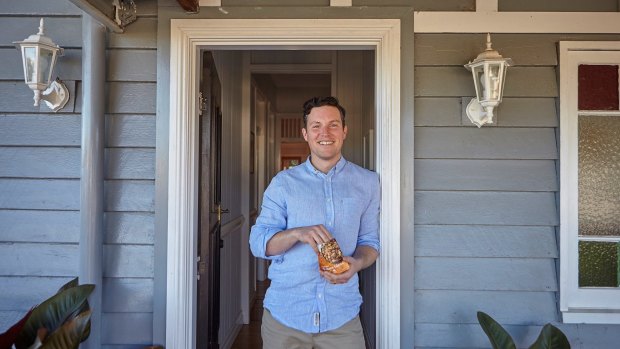
Brookfarm CEO Will Brook, of Cape Byron Distillery's Brookie's Gin.Credit: Destination NSW
IT'S ONLY NATURAL
My best childhood memories of Byron are from days spent at The Pass; surfing the long right-hander down the beach, heading out to dive at Julian Rocks, and scrambling up the headland long before council built the stairs.
Yet it wasn't until I took Delta Kay's Indigenous Tour that I realised I was standing on a 1000-year-old midden and traditional gathering place for the Arakwal-Bundjalung people.
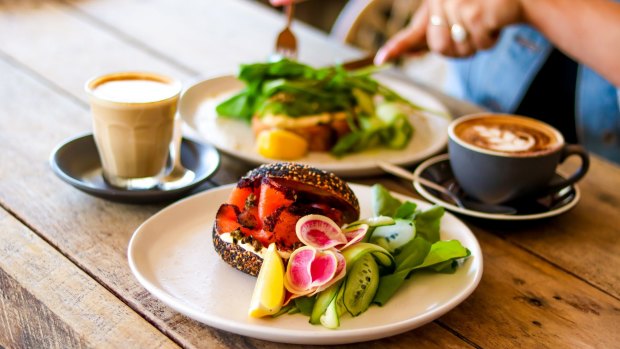
Bundjalung woman Mindy Woods opened Karkalla in 2020 with a modern Indigenous menu.Credit: Karkalla Byron Bay
After decades working with National Parks and Wildlife, Delta Kay launched her Indigenous Tours just under two years ago. Each tour takes visitors for a walk on Country, includes contact and creation stories, as well as an introduction to the foods, practices, and history of the region.
In the short time she's been operating, Kay has observed a change in visitor attitudes. "I've found there's a huge shift … people want to look after the land, people want to do the right thing. People want to spend their holidays connecting on a bit of a deeper level."
However, she believes Byron is still misrepresented and largely misunderstood. "I want to change the narrative around Byron," she adds. "Yes, there are pristine beaches and a laid-back lifestyle, but there's also a caring community and the Arakwal people's work looking after Country."
The work the Arakwal people have undertaken to secure Byron Bay is significant; in 1994, three Arakwal elders lodged a Native Title application and in 2001, the first Indigenous Land Use Agreement was signed, establishing the Arakwal National Park. It was a move that restricted development in Byron.
Kay offers three tours in the area: a Cape Byron tour at The Pass, a Broken Head tour, and a Bangalow Bush Tucker tour, which takes place in one of the last remaining pockets of the Big Scrub Rainforest. See explorebyronbay.com
GOING BEYOND IN BYRON
The Byron hinterland once boasted one of the largest expanses of lowland subtropical rainforest in Australia. However, after being logged for red cedar and cleared for agriculture, today just 1 per cent of the Big Scrub Rainforest remains.
"When we bought this land in 1989, we had no idea what subtropical rainforest really was," says Martin Brook, owner and operator of Brook Farm (brookfarm.com.au). The weed-choked land he bought was meant to be a macadamia farm, but a chance encounter led to the family putting aside a small parcel of land for regeneration.
More than 35,000 plants and 30 years later, Brookfarm Muesli is stocked in supermarkets across Australia. Brookie's Gin, made in the family's on-site Cape Byron Distillery, wins gold medals at international awards, and the land set aside for regeneration is now a thriving rainforest oasis.
Brook is also involved with Big Scrub Landcare (bigscrubrainforest.org), who have helped regenerate and restore 600 hectares of rainforest; a movement that has grown significantly in the last decade as local landholders get involved.
"Some of them are planting 100,000 to 150,000 trees," says Brook, who believes he's seeing a push within the community to repair damage done to the land. "It's a heck of a thing to say, but I do believe we are just custodians of this land, and for me, the importance of leaving this place in a much better state than when I found it is of critical importance."
Each weekend, visitors can tour the rainforest on one of Cape Byron Distillery's Rainforest and Distillery tours (capebyrondistillery.com).
On the afternoon we visit, a koala naps in a eucalypt above the carpark and a lyrebird scuttles across the path. Despite its youth, the rainforest is spectacular; the valley floor is cool and damp and we pluck wild Davidson plums from a tree.
They're used in the distillery's Slow Gin; our guide tells us how one day the distillery didn't have enough on hand and ended up bartering with a local taxi driver who had them growing in his yard in town.
CONNECTING OVER FOOD
It's the sort of arrangement you'll see happen between businesses and growers often throughout the Shire; collaborations are common, bartering occurs frequently, and goodwill goes a long way among locals.
"We work so closely with local farmers and producers, and we kind of have this beautiful exchange going," says Mindy Woods, former chief executive of Sydney's Lotus Group and owner of local Byron Bay restaurant Karkalla (karkalla.com.au).
"They'll bring down Davidson plums or finger limes, and we basically exchange a meal for them … we feel like we're working with nature, and connecting with the community, and then we're able to share that with our guests."
Woods, a Bundjalung woman who comes from the Widjabul Wia-bul clan, opened Karkalla in 2020, and it has been lauded by the Good Food Guide, published by Traveller on Sunday's parent titles, The Sydney Morning Herald and The Age. "Karkalla is my attempt at connecting our ancient culture with the modern world," she says.
Karkalla's modern Indigenous menu integrates several locally grown native ingredients in dishes that include calamari salt and pepper berry, hibiscus cured ocean trout and crispy salt bush – all locally sourced and reflecting the area's ancient food traditions.
"Food is such a beautiful way to connect people," says Woodssays Woods, who is currently re-appearing on TV screens as a contestant on MasterChef. "So many of the Bundjalung tribes would congregate in Cavanbah throughout thousands of years to share food; to harvest it, come down to the beach down to The Pass and actually hunt pipis and catch mullet, and that connection is still very, very strong in the area."
There's no doubt this kind of high-quality produce has been a key draw for many chefs who have moved to Byron. Along with Karkalla, several exceptional restaurants have established themselves, including Harvest at Newrybar (harvest.com.au) and Fleet in Brunswick Heads (fleetrestaurant.com.au). But if a booking is hard to come by, the Byron food culture is accessible no matter what your budget.
"For people visiting the area, the farmer's market is one of the few ways they really get to the heart and soul of the community," says Allie Godfrey, manager of the Mullumbimby Farmers Market (mullumfarmersmarket.org.au).
"The producers and farmers, they work hard, and the day for them to shine is market day."
A visit to Mullum market (held at the Mullumbimby Showgrounds every Friday morning and which returned on March 25 following the floods) isn't so much about shopping. It is a social event: there's live music and kids' craft, petitions to sign, and waiting in line is an exercise in patience for out-of-towners: stallholders prioritise checking in with their regulars over making the next sale.
The reward is an incredible bounty of local produce. The coffee you order is grown just a few kilometres away, while exotics like wild sugar apple and chocolate pudding fruit are sold next to freshly harvested organic produce. More than just a farmer's market, the market is considered a critical part of the area's "food security".
LIVE MUSIC SCENE
While Netflix reality series Byron Baes is the latest attempt to cash in on "Brand Byron", the concept is hardly a reflection of what the town has to offer creatively.
For decades Byron has had a thriving local arts scene, fuelled by festivals including Byron Writers Festival (byronwritersfestival.com), Splendour in the Grass (splendourinthegrass.com) and Bluesfest (bluesfest.com.au), all helping cement the town's solid cultural reputation.
Debuting in 1990 as the East Coast International Blues and Roots Music Festival, Bluesfest has been synonymous with Byron for more than 30 years, with the festival bringing millions of dollars to the economy each Easter. Peter Noble, Bluesfest director, believes the festival's decades-long success is tied to Byron itself and not only its stellar programs.
"Certainly, being held in Byron adds a very special aspect to it. There's nowhere quite like Byron, and when I say Byron, I'm not just talking Byron Bay, I'm talking about the whole region, the area."
After a successful career in the US, Noble returned to Australia in the 1980s and was immediately captivated by the tiny coastal town.
"What I saw was just this incredible interest in the arts," says Noble. "In Sydney, you might get 1000 people at a live show. In Byron, which had 6000 people living in the town at the time, you got 500 people.
"We started doing shows here and all of a sudden, we're playing to 1000 to 1200 people. And I'm just shaking my head going, how can this little town be doing that?".
Bluesfest made a successful return at Easter after a two-year COVID-19 hiatus featuring Midnight Oil, Jimmy Barnes and Crowded House; the next one is scheduled for Easter 2023.
From the back bars to buskers, live music thrives and is supported at venues across the shire daily, including the Great Northern (thenorthern.com.au) and Railway pubs (therailsbyronbay.com), Brunswick Hotel (hotelbrunswick.com.au) and Brunswick Picture House (brunswickpicturehouse.com).
ACCOMMODATION: HOW TO SLEEP WELL AT NIGHT
Whether you're a local or a visitor, accommodation is tough in Byron. Real estate prices are offensive, homelessness is a critical issue (especially among women) and the short-term holiday rental market significantly impacts the housing security of those living in the region — especially since the February floods. So how can you stay ethically in the area?
At the top end of town, one of the better managed mainstream resorts has been the Crystalbrook Byron. The new owners Crystalbrook Collection have continued to preserve and prioritise the resort's 18 hectares of temperate rainforest, with a winding boardwalk passing through coastal cypress, palm, and paperbark forest to the 92-newly renovated guest suites in the forest. Rooms from $495 a night, see crystalbrookcollection.com/byron.
If you prefer to be self-contained, one of Byron's most exclusive and quirky options is run by the National Parks and Wildlife Service. Partridge Cottage and Geoff's Shed are located directly on the main beach of Byron between Clarke's Beach and The Pass.
While quite basic for the price, the two cottages are decorated with retro furniture and trimmed with historic black and white pictures of Byron Bay. Once you've settled, you feel like you've stepped back through time to the 1960s when Byron was a surfer's haven. From $665 for the minimum three-day stay, see nationalparks.nsw.gov.au.
For those on a budget, Broken Head Holiday Park is a fantastic option. A few kilometres from the main town and protected from the wind by dense forest, the campground recently underwent an extensive upgrade.
Tucked in behind the headland, you can walk straight onto the beach and paddle out at one of Byron's best surf breaks. Owned by the Indigenous Arakwal Corporation, expect wallabies and bush turkeys foraging in the bush around you and plenty of friendly holiday makers to chat with. Unpowered sites start at $39, see brokenheadholidaypark.com.au.
SHOULD YOU VISIT BYRON AFTER THE FLOODS?
The Northern Rivers region was devastated by floods in February, and many of the communities impacted are still recovering from the damage and loss. However, according to Arakwal-Bundjalung elder Delta Kay who operates tours in the Byron Shire, it's time for tourists to come back.
"We're a town that relies heavily on tourism, and as a tourism operator, we do need people to come back," says Kay, who along with other operators, has noticed a significant downturn in visitors and bookings since the floods in the region.
"Just be mindful of locals who have been affected by the floods … do some homework before you come up, and find out what's happening. Definitely buy local and participate in local events and tourism activities, because the community really relies on visitors".
FIVE PLACES THE INFLUENCERS LOVE (AND GET RIGHT)
THE PADDOCK PROJECT
Home to Mullumbimby's insta-famous "Love" sign, The Paddock Project sells freshly grown produce, plants and coffee. While they were heavily flooded, a volunteer team is currently replanting and building it back up. See paddockproject.com
BALCONY BAR
If you love cocktails, people watching and being seen, the wrap-around deck of Balcony Bar & Oyster Co is for you. Head there on a Sunday night when their Drag and Dine party is in full swing. See balcony.com.au
CRYSTAL CASTLE
Located near Mullumbimby and with five hectares of gardens, here you can snap a selfie with crystal wings or climb inside the purple Dragon's Egg crystal. See crystalcastle.com.au
THE FARM
A working property, The Farm's hub of micro businesses, including a bakery, florist and Three Blue Ducks is the darling of the insta-set. Wear good shoes if you plan to tour the fields. See thefarm.com.au
WATERFALLS
While most people head to Minyon Falls to wild swim, the smaller Killen Falls at the Emigrant Creek swimming hole in Tintenbar is a quieter, more picturesque option. See visitnsw.com
Sign up for the Traveller Deals newsletter
Get exclusive travel deals delivered straight to your inbox. Sign up now.